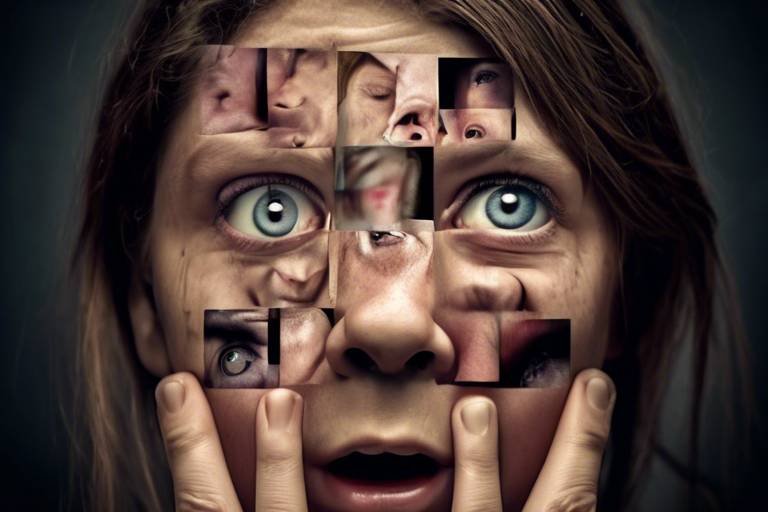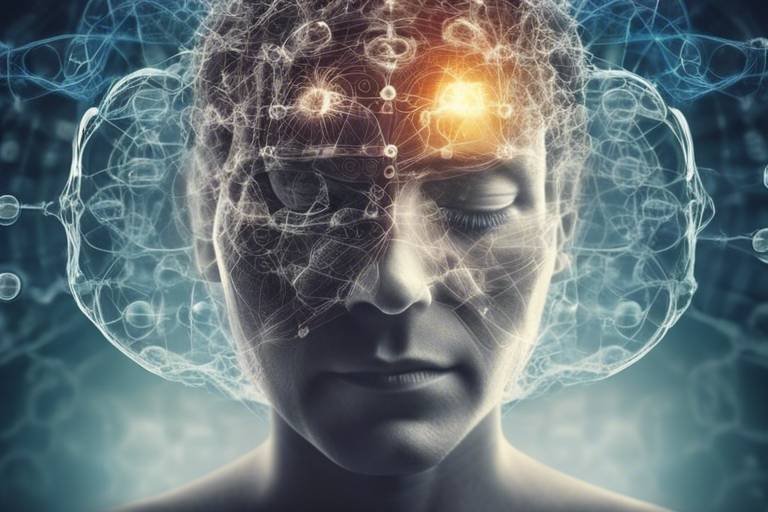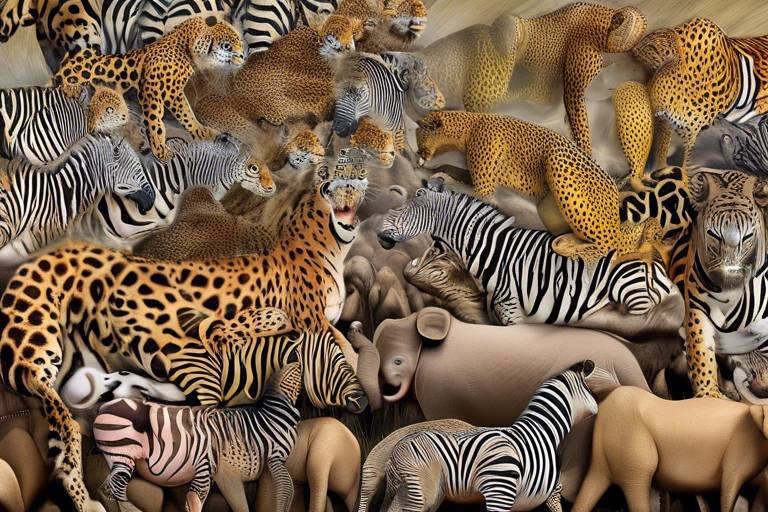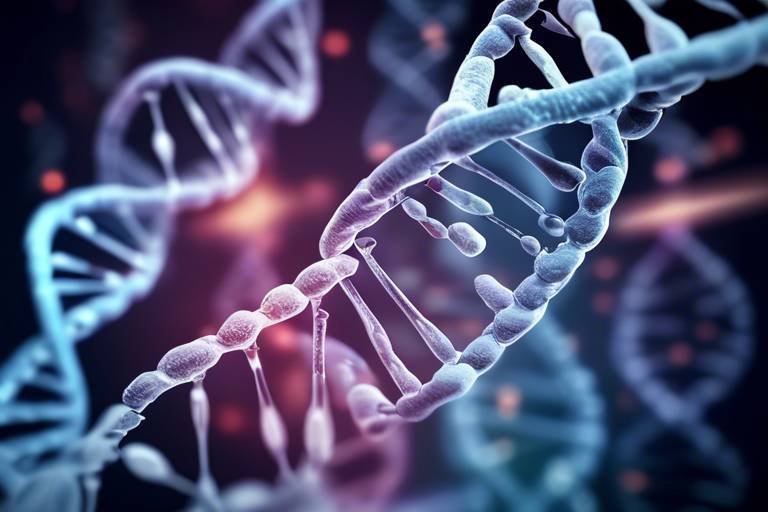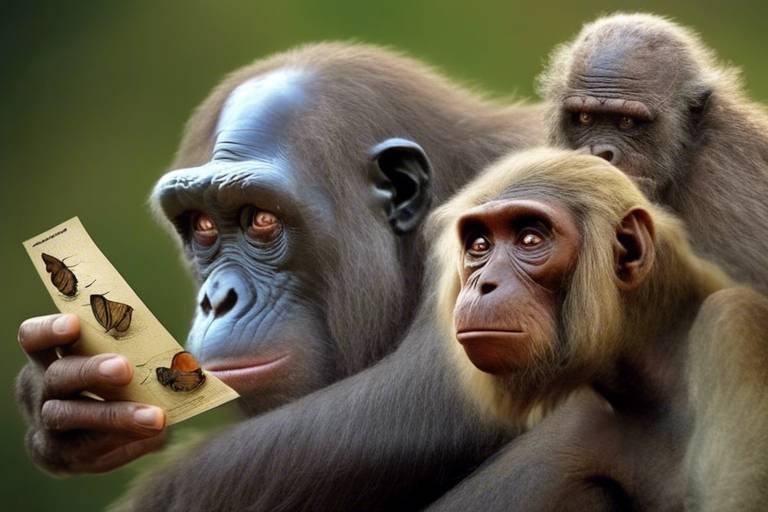The Role of Science in Understanding Human Behavior
Understanding human behavior is like peeling an onion; each layer reveals something new and often surprising about why we do what we do. Science plays a pivotal role in this exploration, providing a structured approach to unravel the complexities of our thoughts, feelings, and actions. Through various scientific lenses—psychology, sociology, and biology—we gain insights that not only help us understand ourselves but also foster better communication and relationships with others.
Imagine standing in front of a mirror, reflecting not just your physical appearance but also your inner workings. The psychological perspective focuses on mental processes, emotions, and cognitive functions that influence our behavior. Think about how your mood can alter your decisions, or how stress can lead to impulsive actions. By employing rigorous methods, psychologists delve into the intricacies of the mind, offering explanations for behaviors that might otherwise seem irrational.
On the other hand, sociology takes us beyond the individual and into the realm of society. It examines how social structures, cultural norms, and group dynamics shape our actions. Have you ever noticed how you behave differently in a crowd compared to when you’re alone? This phenomenon is a testament to the power of socialization, which instills societal values and expectations throughout our lives. From our family to our friends and even the media, we are constantly influenced by the world around us.
As we explore these influences, we must also consider cultural factors. Different cultures provide distinct frameworks for what is deemed acceptable behavior, beliefs, and practices. For instance, what might be considered polite in one culture could be seen as rude in another. This highlights the importance of context when analyzing behavior. Additionally, group dynamics play a significant role; peer pressure and the desire for acceptance can lead individuals to act in ways that contradict their personal beliefs.
Moving into the biological perspective, we find that our behavior is not solely a product of our environment but also of our biology. Genetics and neurobiology offer profound insights into how our brain chemistry and inherited traits shape our actions. For example, research in behavioral genetics reveals that our genetic predispositions can interact with environmental factors, leading to unique individual differences. This interplay between nature and nurture is crucial for understanding why we behave the way we do.
Neuroscience further enriches our understanding by exploring the brain's functions and structures. It helps us decipher the neurological underpinnings of our emotions, decision-making processes, and social interactions. Imagine the brain as a complex orchestra, where each part plays a vital role in creating the symphony of our behavior. When one section falters, the entire performance can be affected, illustrating how interconnected our biological systems are in shaping who we are.
In summary, the role of science in understanding human behavior is multifaceted and dynamic. By integrating psychological, sociological, and biological perspectives, we can gain a more comprehensive understanding of ourselves and others. This knowledge not only enhances our self-awareness but also equips us with the tools to navigate the complexities of human interactions. As we continue to explore these scientific avenues, we uncover more layers of the human experience, leading to greater empathy and connection in our lives.
- How does psychology help us understand human behavior?
Psychology provides insights into mental processes and emotions that drive our actions, helping us make sense of our thoughts and feelings. - What role does sociology play in understanding behavior?
Sociology examines the influence of social structures and cultural norms, highlighting how our environment shapes our actions. - How do biological factors affect behavior?
Biological factors, including genetics and brain chemistry, contribute significantly to our behavior, influencing personality and decision-making.

The Psychological Perspective
Understanding human behavior through psychology is like peering into a vast, intricate maze where every turn reveals the complexities of the mind. Psychology delves into the mental processes, emotions, and cognitive functions that dictate how individuals think, feel, and act in various situations. Imagine walking through a bustling city; each person you encounter is influenced by their unique experiences, thoughts, and emotions, all shaped by psychological factors. This perspective offers a lens through which we can explore the myriad reasons behind our actions.
At its core, psychology seeks to answer fundamental questions about why we behave the way we do. Are our actions driven by instinct, learned behavior, or a combination of both? For instance, consider the role of emotions. They act as both a compass and a guide, steering us through our daily lives. When we experience joy, fear, or anger, these emotions can significantly influence our decisions, often in ways we don’t even recognize. To illustrate this, think about how you might react to a stressful situation: your heart races, your palms sweat, and suddenly, you might find yourself making choices that you wouldn’t normally consider. This is the power of emotions at play.
Furthermore, cognitive functions, such as memory and perception, are pivotal in shaping our behavior. Our memories inform our decisions, and our perceptions can alter our understanding of reality. For example, two people may witness the same event but interpret it differently based on their past experiences and cognitive biases. This variability highlights the importance of understanding the psychological underpinnings of behavior. Psychologists employ a variety of methods, including experiments and observational studies, to unravel these intricate dynamics.
In addition to emotions and cognition, we cannot overlook the impact of personality traits. Each individual possesses a unique blend of traits that influence their behavior in distinct ways. For instance, someone who scores high on the extraversion scale might thrive in social situations, while an introvert may prefer solitude. This interplay of personality and behavior showcases the diverse tapestry of human actions.
To further understand these psychological concepts, let’s consider a few key areas:
- Behavioral Psychology: This branch focuses on how external stimuli shape behavior through conditioning.
- Cognitive Psychology: This area examines how our thoughts and perceptions influence our actions.
- Developmental Psychology: This field studies how behavior changes throughout the lifespan, influenced by various stages of development.
Ultimately, the psychological perspective on human behavior is a rich and multifaceted exploration. It invites us to reflect on our experiences, emotions, and interactions with others, urging us to consider the deeper motivations that drive our actions. By understanding these psychological dimensions, we can foster better relationships, improve our mental health, and navigate the complexities of human interactions with greater empathy and insight.

The Sociological Perspective
When we dive into the sociological perspective, we're essentially peeling back the layers of human behavior to uncover how our social environment shapes who we are and how we act. It's fascinating to think that our actions are not just a product of individual choice, but are heavily influenced by the intricate web of social structures and cultural norms that surround us. Imagine a fish swimming in a vast ocean; the water is its environment, and it’s the same for humans in society. Our behaviors are often dictated by the currents of social expectations and pressures.
Sociology emphasizes that understanding behavior requires a keen awareness of the context in which individuals operate. This context includes a myriad of factors such as social class, race, and gender, all of which create distinct experiences that can either empower or limit individuals. For instance, consider how different socioeconomic backgrounds can influence educational opportunities and career paths. A child from a wealthy family may have access to better schools and resources, while another from a lower-income background may face significant barriers. This disparity can lead to vastly different behaviors and life choices, illustrating the profound impact of social structures on our lives.
At the heart of sociology is the concept of socialization, which is the process through which individuals learn and internalize the values, norms, and expectations of their society. From the moment we are born, we are bombarded with messages about how to behave, what to believe, and how to interact with others. Family, peers, and even media play pivotal roles in this learning process. Think of socialization as a script that we are all handed at birth; some lines are universal, while others are unique to our cultural context. This script guides our behaviors and interactions throughout various life stages.
Cultural factors are another critical aspect of the sociological perspective. They provide frameworks for understanding what is considered acceptable behavior within different societies. For example, in some cultures, collectivism is valued over individualism, which can lead to behaviors that prioritize group harmony over personal ambition. This cultural lens can significantly shape our actions and beliefs, making it essential to understand the cultural backdrop against which behavior occurs. To illustrate this, consider the following table:
| Cultural Context | Value Orientation | Behavioral Implications |
|---|---|---|
| Individualistic Cultures | Self-reliance, personal achievement | Competitive behavior, assertiveness |
| Collectivist Cultures | Group harmony, community well-being | Cooperative behavior, consensus-driven decisions |
Another fascinating area within the sociological perspective is group dynamics. This refers to how individuals behave differently when they are part of a group compared to when they are alone. The desire for acceptance and the influence of peer pressure can lead individuals to conform to group norms, sometimes even against their own beliefs. Have you ever found yourself going along with a group decision just to fit in? This phenomenon is a classic example of how group dynamics can shape behavior. The need for belonging can sometimes overshadow personal convictions, leading to decisions that may not align with one’s true self.
To sum it up, the sociological perspective offers a rich tapestry of insights into human behavior, illustrating that our actions are deeply intertwined with the social structures and cultural contexts we inhabit. By understanding these dynamics, we can better appreciate the complexities of human behavior and the myriad factors that influence our choices.
- What is the sociological perspective?
The sociological perspective examines how social structures, cultural norms, and group dynamics influence individual behavior and societal trends. - How does socialization affect behavior?
Socialization instills societal values and norms, shaping how individuals think and act throughout their lives. - What role do cultural influences play in behavior?
Cultural influences provide frameworks for acceptable actions and beliefs, which vary across different societies. - How do group dynamics impact decision-making?
Group dynamics can lead individuals to conform to peer pressures, affecting their choices and behaviors.

Socialization and Behavior
Socialization is like the invisible thread that weaves together the fabric of our behavior. From the moment we take our first breath, we are immersed in a world of influences that shape who we are and how we act. Imagine socialization as a vast ocean, where each wave represents a different influence—be it family, friends, or media—that crashes upon the shore of our developing identity. This process is crucial because it instills societal values, norms, and expectations that guide our actions throughout life.
As we grow, we absorb lessons from our surroundings, often without even realizing it. Our families are typically the first teachers, imparting fundamental beliefs and behaviors. For instance, a child who grows up in a nurturing environment may develop a strong sense of empathy, while another in a more chaotic setting might struggle with trust and social interactions. The interplay between these experiences can lead to vastly different outcomes in behavior and personality.
Moreover, peers play a significant role during adolescence, a time when the desire for acceptance can lead to conformity. This is where the pressure to fit in can sometimes overshadow individual preferences. Have you ever noticed how you might dress or act differently around friends compared to when you're alone? This phenomenon highlights the powerful impact of socialization on behavior, often pushing individuals to adapt to group norms.
Media also serves as a potent socializing agent. With the rise of social media, the influence of digital interactions has skyrocketed. Young people today are bombarded with images and messages that shape their perceptions of reality, self-worth, and relationships. For instance, the portrayal of success, beauty, and happiness in media can create unrealistic standards that affect how individuals view themselves and others. This constant comparison can lead to feelings of inadequacy and anxiety, showcasing how socialization through media can have profound effects on behavior.
In summary, socialization is a lifelong process that molds our behaviors and interactions. It's like a dance, where we learn the steps from those around us, adapting and improvising as we go. Understanding this process is essential because it not only reveals why we behave the way we do but also highlights the importance of cultivating positive influences in our lives.
- What is socialization?
Socialization is the process through which individuals learn and internalize the values, beliefs, and norms of their culture, shaping their behavior and identity.
- How does family influence behavior?
Family serves as the primary agent of socialization, teaching fundamental values and behaviors that form the basis of an individual's personality and social interactions.
- What role do peers play in socialization?
Peers significantly influence behavior during adolescence, as individuals often seek acceptance and may conform to group norms, impacting their choices and self-expression.
- How does media affect socialization?
Media shapes perceptions and behaviors by portraying societal norms and expectations, influencing how individuals view themselves and their relationships with others.

Cultural Influences
Cultural influences are like the invisible threads that weave together the fabric of our behaviors and beliefs. They shape who we are, how we interact with others, and even how we perceive the world around us. Imagine walking into a room filled with people from different backgrounds; the way they communicate, express emotions, and respond to situations can vary dramatically based on their cultural upbringing. This phenomenon highlights the profound impact culture has on our daily lives.
At its core, culture encompasses the values, norms, customs, and practices that are shared among a group of people. These elements can dictate everything from how we celebrate holidays to how we approach conflict resolution. For instance, in some cultures, direct eye contact is a sign of confidence and honesty, while in others, it may be seen as disrespectful. Such differences can lead to misunderstandings if we are not aware of the cultural context in which behaviors are rooted.
Moreover, cultural influences can be observed in various aspects of life, including:
- Communication Styles: Different cultures have unique ways of expressing themselves. For example, some cultures may prefer a more indirect style of communication, where messages are conveyed through hints and context, while others value straightforwardness.
- Social Norms: What is considered polite or rude can vary widely. In some cultures, collectivism is prized, leading individuals to prioritize group harmony over personal opinions, while in others, individualism is celebrated, encouraging self-expression and personal achievement.
- Rituals and Traditions: Cultural rituals, such as weddings or religious ceremonies, reflect deep-rooted beliefs and values. These practices not only strengthen community bonds but also reinforce individual identities within the cultural framework.
Furthermore, culture is not static; it evolves over time. As societies become more interconnected through globalization, cultural exchanges can lead to hybrid identities where individuals navigate multiple cultural influences. This blending can enrich personal experiences but also create challenges, as individuals may struggle to reconcile conflicting cultural expectations.
In essence, understanding cultural influences is crucial for comprehending human behavior. By recognizing the diverse cultural backgrounds that shape our perspectives, we can foster greater empathy and enhance our interactions with others. It's like adding color to a monochrome painting; the vibrancy of different cultures can illuminate the complexities of human behavior, making our world a richer and more diverse place.
- What are cultural influences? Cultural influences refer to the shared values, norms, customs, and practices that shape the behaviors and beliefs of a group of people.
- How do cultural influences affect communication? Different cultures have unique communication styles, which can lead to misunderstandings if individuals are not aware of these differences.
- Can cultural influences change over time? Yes, cultural influences are dynamic and can evolve due to globalization and cultural exchanges.
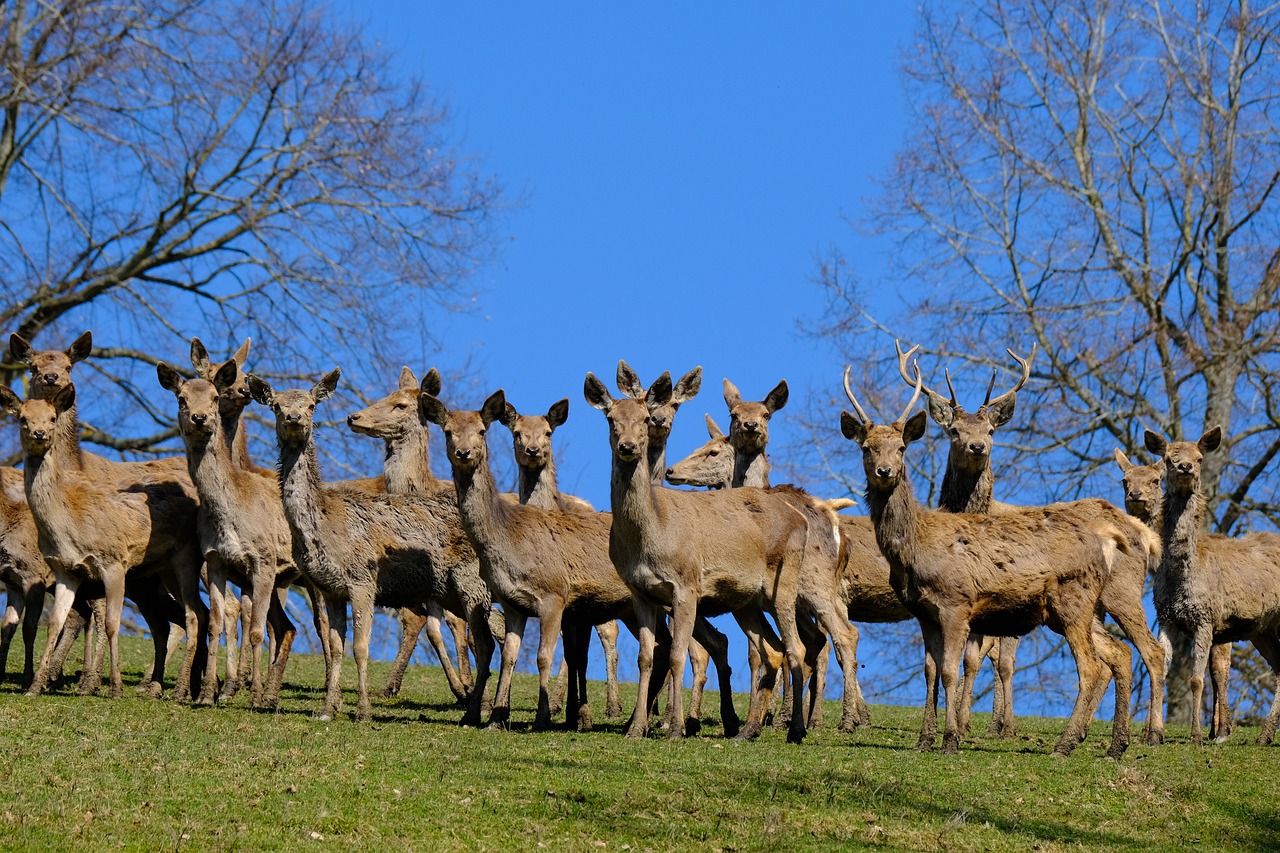
Group Dynamics
Group dynamics is a fascinating field that delves into how individuals behave within a group setting. Imagine a school of fish swimming together; each fish is influenced by the movements of the others, creating a beautiful, synchronized display. Similarly, humans are not isolated beings; our behaviors and decisions are often shaped by the groups we belong to. Whether it’s a workplace team, a social circle, or a community organization, the dynamics at play can significantly alter how we think and act.
One of the key elements of group dynamics is the concept of peer pressure. This invisible force can be both positive and negative. For instance, when a friend encourages you to try a new hobby, it can lead to personal growth. Conversely, the pressure to conform can lead individuals to engage in behaviors they might not otherwise choose. This duality makes understanding group dynamics essential for fostering healthy interactions.
Another important aspect is conformity. Have you ever found yourself agreeing with a group, even if you had a different opinion? This phenomenon occurs because individuals often prioritize group harmony over personal beliefs. The desire for acceptance can lead to a compromise of values, which is a critical consideration in various settings, from classrooms to corporate environments.
Moreover, group dynamics can also be influenced by the leadership styles present within a group. Leaders can shape the atmosphere and the behaviors of group members. For instance, an authoritarian leader may stifle creativity and discourage open communication, while a democratic leader can foster collaboration and innovation. The type of leadership can either enhance or hinder group cohesion and productivity.
To further illustrate these concepts, consider the following table that summarizes different aspects of group dynamics:
| Aspect | Description |
|---|---|
| Peer Pressure | The influence exerted by a group that encourages individuals to change their attitudes, values, or behaviors to conform to group norms. |
| Conformity | The act of matching attitudes, beliefs, and behaviors to group norms, often to gain acceptance. |
| Leadership Styles | Different approaches leaders take, which can significantly affect group morale and effectiveness. |
In conclusion, understanding group dynamics is crucial for navigating social interactions effectively. By recognizing the influences of peer pressure, conformity, and leadership styles, individuals can better manage their behaviors and decisions within groups. This knowledge not only enhances personal relationships but also contributes to a more harmonious and productive community.
- What is the importance of studying group dynamics? Studying group dynamics helps us understand how individuals interact within groups, which can improve teamwork, communication, and overall effectiveness in various settings.
- How can group dynamics affect decision-making? Group dynamics can lead to phenomena like groupthink, where the desire for harmony results in poor decision-making. Awareness of these dynamics can help mitigate such risks.
- Can understanding group dynamics improve leadership skills? Yes, by understanding how group dynamics work, leaders can adapt their styles to foster better communication, collaboration, and motivation among team members.
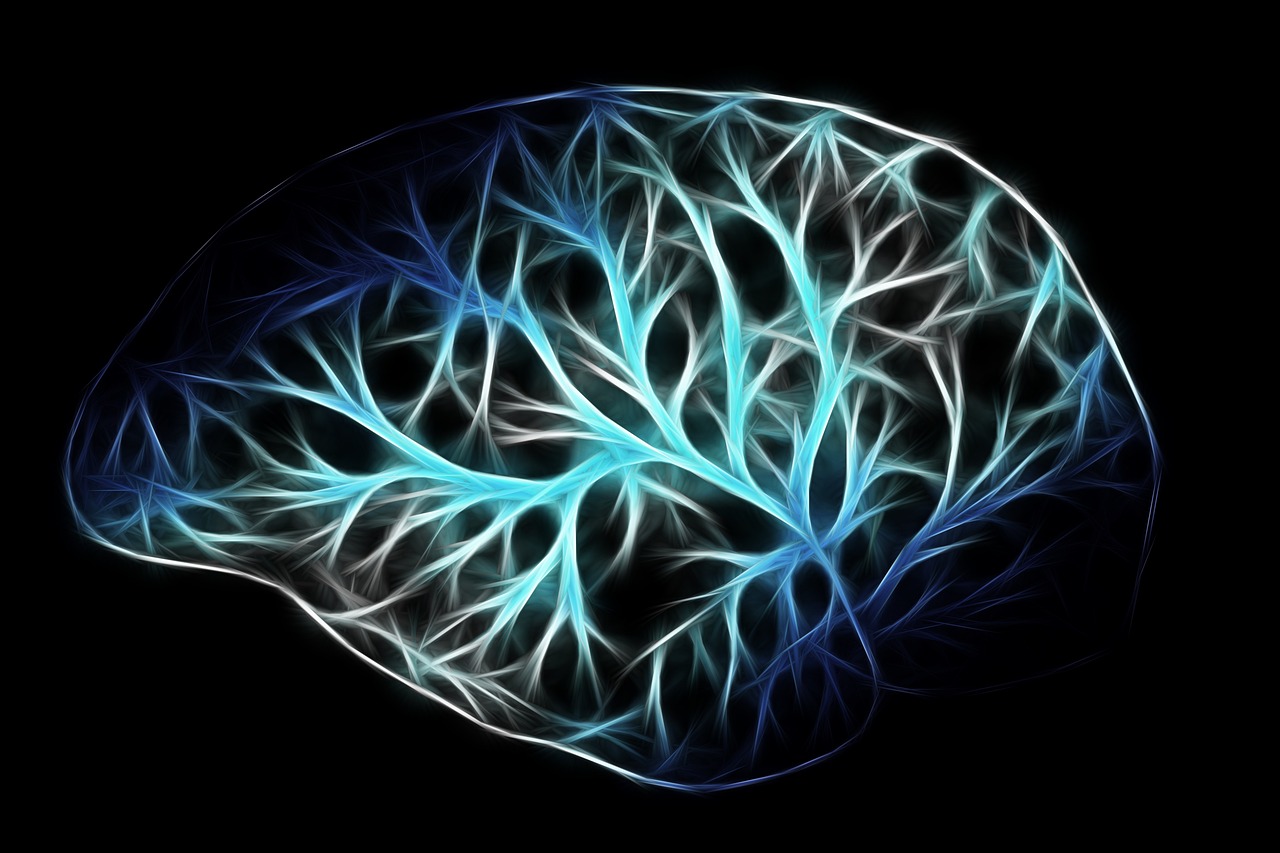
Social Structures
Social structures are like the invisible frameworks that shape our lives, guiding our behavior and interactions in profound ways. Imagine walking through a bustling city; each person you see is influenced by a web of social connections, norms, and roles that dictate how they act. These structures, which encompass aspects such as class, race, and gender, are not just abstract concepts; they are the very fabric of our daily experiences. They create distinct pathways for individuals, shaping the opportunities and challenges they face in life.
Take, for example, the concept of social class. This structure can determine everything from your access to education and healthcare to your social networks and job prospects. Higher social classes often enjoy privileges that can lead to better living conditions and opportunities, while lower classes may struggle against systemic barriers. It's a bit like playing a game where some players start with better resources, making it easier for them to win. This disparity can lead to a cycle of poverty or privilege that perpetuates itself across generations.
Similarly, race plays a crucial role in shaping social structures. It can influence how individuals are perceived and treated in society, often leading to systemic inequalities. For instance, studies have shown that people of different races may receive different treatment in various settings, including the workplace and the criminal justice system. This differential treatment can create a ripple effect, impacting not just individual lives but entire communities.
Gender is another significant social structure that influences behavior. Societal expectations around masculinity and femininity can dictate how individuals express themselves, pursue careers, and interact with others. For example, traditional gender roles may encourage men to be assertive and competitive, while women might be socialized to be nurturing and cooperative. These roles can limit personal expression and create tension when individuals feel pressured to conform to societal expectations.
Understanding these social structures helps us grasp the complexities of human behavior. They remind us that our actions are not just personal choices but are often shaped by larger societal forces. For instance, consider how group dynamics can shift based on these structures. When individuals come together in a group, their behaviors can change dramatically, influenced by the group's composition and the societal norms that govern it. This phenomenon is evident in various settings, from workplaces to social gatherings, where the presence of authority figures or peer groups can lead to conformity or rebellion.
In summary, social structures are fundamental to understanding human behavior. They create a context in which individuals navigate their lives, influencing everything from personal choices to larger societal trends. By examining these structures, we gain valuable insights into the motivations behind our actions and the dynamics of our interactions with others.
- What are social structures? Social structures are the organized patterns of relationships and social arrangements that shape individuals' behavior and interactions within a society.
- How do social structures influence behavior? They influence behavior by establishing norms, expectations, and opportunities that guide how individuals act and interact with others.
- Can social structures change? Yes, social structures can evolve over time due to cultural shifts, social movements, and changes in legislation, affecting how individuals relate to one another.
- Why is it important to study social structures? Studying social structures is crucial for understanding the complexities of human behavior and addressing social inequalities that may arise from these frameworks.

The Biological Perspective
When we delve into the biological perspective of human behavior, we uncover a fascinating interplay between our genetics, brain chemistry, and environmental influences. It's like peeling back the layers of an onion—each layer reveals more about what makes us tick. Our biology forms the foundation upon which our behaviors are built, and understanding this intricate relationship is crucial for grasping why we act the way we do.
At the core of this perspective lies the concept of genetics. Research in behavioral genetics has shown that our genes can predispose us to certain behaviors. For instance, individuals may inherit traits that influence their temperament, risk-taking tendencies, or even their susceptibility to mental health disorders. It's essential to recognize that these genetic predispositions do not operate in a vacuum; they interact dynamically with environmental factors, creating a rich tapestry of human behavior. Imagine genetics as the script of a play, while the environment acts as the director, shaping how the script is performed.
Furthermore, the role of neurobiology cannot be overlooked. Our brains are the command centers of our behavior, processing information, emotions, and social cues. Neurotransmitters—those tiny chemical messengers—play a critical role in regulating our mood and behavior. For example, dopamine is often associated with pleasure and reward, influencing our motivation and decision-making. A deficiency in this neurotransmitter can lead to conditions such as depression, highlighting how vital our biological makeup is to our overall behavior.
| Neurotransmitter | Function | Impact on Behavior |
|---|---|---|
| Dopamine | Reward and pleasure | Motivation, addiction |
| Serotonin | Mood regulation | Depression, anxiety |
| Norepinephrine | Stress response | Fight or flight response |
Moreover, the biological perspective also encompasses how hormonal changes can affect our behavior. For instance, during puberty, the surge of hormones can lead to heightened emotions and risk-taking behaviors in adolescents. Similarly, fluctuations in hormones during different life stages—such as pregnancy or menopause—can significantly alter mood and behavior. It's as if our biology is a symphony, with hormones playing the instruments that create the music of our emotions and actions.
Understanding the biological perspective is not just about recognizing these factors in isolation. It's about seeing how they intertwine to shape our behavior in complex ways. For instance, consider how a genetic predisposition to anxiety might manifest differently in someone raised in a supportive environment versus someone in a stressful, chaotic household. The biological perspective encourages us to appreciate the nuanced interactions between our biology and our experiences, painting a more comprehensive picture of human behavior.
In conclusion, the biological perspective offers invaluable insights into the roots of our actions and interactions. By examining our genetics, brain chemistry, and hormonal influences, we can better understand the underlying factors that drive our behavior. Just as a sculptor chisels away at a block of marble to reveal a masterpiece, exploring the biological aspects of human behavior allows us to uncover the intricate layers that define who we are.
- What role do genetics play in human behavior? Genetics can influence traits such as temperament and susceptibility to mental health issues, but they interact with environmental factors.
- How do neurotransmitters affect behavior? Neurotransmitters like dopamine and serotonin regulate mood and motivation, impacting our actions and emotional responses.
- Can hormonal changes influence behavior? Yes, hormonal fluctuations can significantly affect mood and behavior at various life stages, such as puberty or menopause.
- Is behavior solely determined by biology? No, behavior is shaped by a combination of biological, psychological, and social factors, creating a complex interplay.
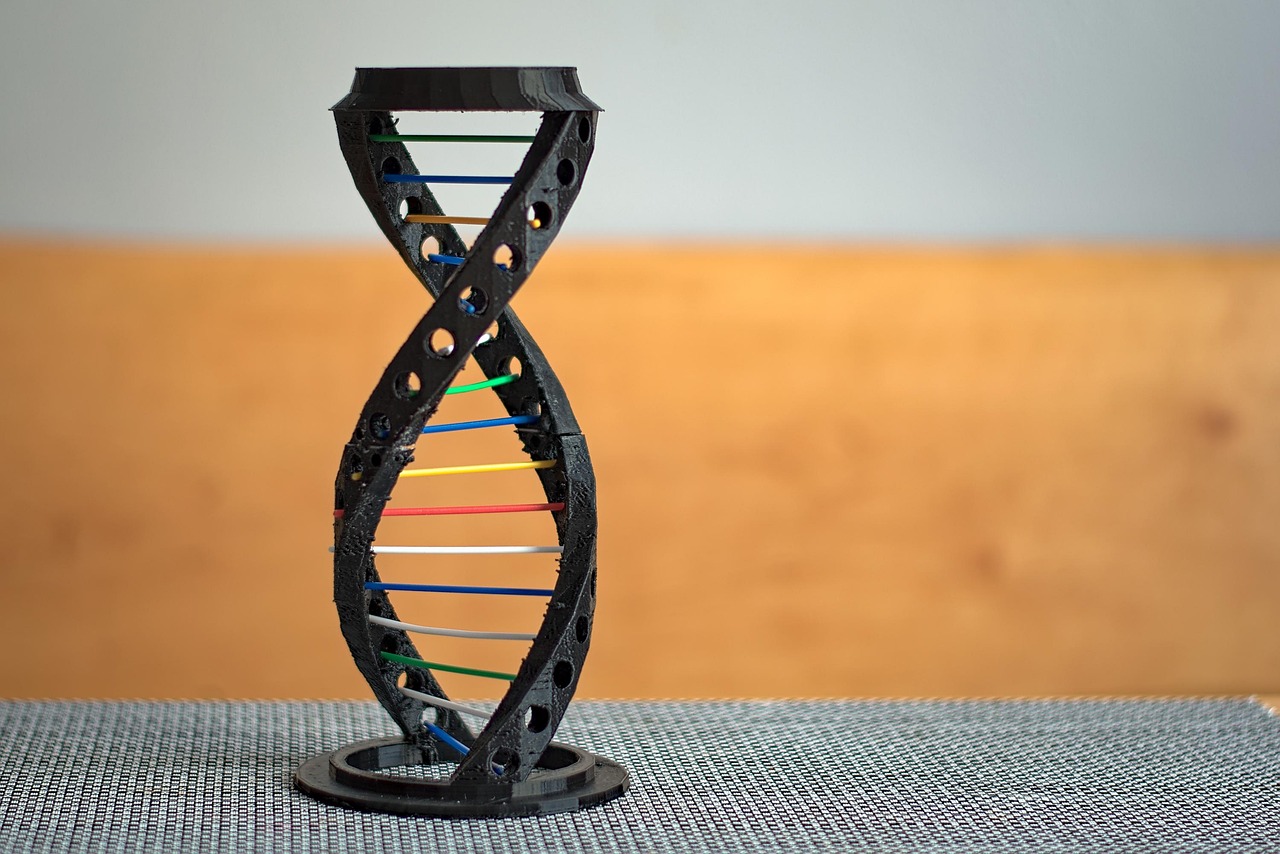
Genetics and Behavior
When we delve into the fascinating world of , it's like opening a treasure chest filled with clues about who we are and why we act the way we do. Imagine for a moment that our genes are like a complex recipe, where each ingredient plays a crucial role in shaping our personality, preferences, and even our reactions to various situations. Just as a chef carefully selects ingredients to create a perfect dish, our genetic makeup influences how we respond to the world around us.
Research in behavioral genetics has shown that our genes can predispose us to certain behaviors, but this doesn’t mean we’re simply products of our DNA. Instead, it's a dance between our genetic predispositions and the environment we grow up in. For instance, let's consider two siblings raised in the same household. Despite sharing the same genetic material, they might develop different interests and behaviors due to their unique experiences and interactions with the world. This interplay is what makes studying genetics so intriguing!
One of the most compelling aspects of this field is the discovery of specific genes that are linked to certain behaviors. For example, variations in the MAOA gene, often referred to as the "warrior gene," have been associated with aggressive behavior in some studies. However, it's essential to note that having this gene doesn’t guarantee that someone will exhibit aggression; rather, it may increase the likelihood under particular circumstances. This is a classic case of nature versus nurture, where both elements work together to shape our actions.
To illustrate the relationship between genetics and behavior, let's take a look at the following table, which summarizes some key findings from behavioral genetics research:
| Gene | Associated Behavior | Environmental Influence |
|---|---|---|
| MAOA | Aggression | Childhood trauma can amplify effects |
| 5-HTTLPR | Depression | Stressful life events may trigger symptoms |
| DRD4 | Risk-taking | Peer influence can heighten tendencies |
This table highlights how certain genes are linked to specific behaviors, but it also emphasizes that these behaviors can be influenced by environmental factors. It's a reminder that while our genetics lay the groundwork, our experiences and choices ultimately shape who we become.
Moreover, the study of twins has provided fascinating insights into the genetic basis of behavior. Identical twins, who share nearly 100% of their DNA, often show remarkable similarities in personality traits, preferences, and even life choices. However, when we look at fraternal twins, who share about 50% of their genetic material, the differences can be striking. This suggests that while genetics play a significant role, the environment cannot be overlooked. It's like a finely tuned instrument where both the strings (genes) and the musician (environment) are essential for creating beautiful music.
In conclusion, the relationship between genetics and behavior is complex and multifaceted. While our genes provide a blueprint for our potential, it is the interaction with our environment that ultimately crafts our unique behavioral tapestry. Understanding this interplay not only enriches our knowledge of human behavior but also opens doors for personalized approaches in fields like psychology and education. So the next time you find yourself pondering why you or someone you know behaves a certain way, remember the intricate dance of genetics and environment that plays a vital role in shaping our lives.
- What role do genes play in determining behavior? Genes can predispose individuals to certain behaviors, but environmental factors also play a significant role in shaping actions.
- Can behavior be changed if it is genetically influenced? Yes, while genetics may influence behavior, individuals can still change their behavior through new experiences and conscious choices.
- Are identical twins more similar in behavior than fraternal twins? Generally, yes, identical twins tend to show more similarities in behavior due to their shared genetic makeup.

Neuroscience Insights
Neuroscience is a fascinating field that dives deep into the inner workings of our brains, unveiling the intricate connections between brain functions and human behavior. Imagine your brain as a highly sophisticated control center, orchestrating everything from your emotions to your decision-making processes. The study of neuroscience helps us understand how different parts of the brain communicate and how this communication influences our actions and interactions with others.
At the core of neuroscience are various techniques, such as brain imaging and electrophysiology, that allow researchers to observe brain activity in real-time. For instance, functional Magnetic Resonance Imaging (fMRI) has revolutionized our understanding of how specific brain regions activate during different tasks or emotional responses. This technology enables scientists to map out the brain's responses to stimuli, shedding light on why we react the way we do in various situations.
Moreover, neuroscience has revealed the role of neurotransmitters—chemical messengers that transmit signals across synapses. These neurotransmitters, such as dopamine and serotonin, play crucial roles in regulating mood, motivation, and reward systems. For example, an increase in dopamine levels is often associated with feelings of pleasure and satisfaction, which can explain why certain behaviors, like eating or socializing, are so rewarding. Understanding these biochemical processes provides a biological basis for many psychological phenomena, offering insights into conditions like depression and anxiety.
Additionally, the study of neuroplasticity—our brain's ability to reorganize itself by forming new neural connections—highlights how experiences shape our behavior over time. This adaptability means that our actions can influence our brain's structure, creating a dynamic interplay between behavior and biology. For instance, engaging in regular physical exercise not only improves physical health but also enhances cognitive functions and emotional well-being, illustrating how behavior can lead to positive changes in brain chemistry.
In summary, neuroscience offers profound insights into the biological underpinnings of human behavior. By understanding how our brains operate and how they are influenced by various factors, we can gain a deeper appreciation for the complexity of our actions and interactions. As we continue to explore this exciting field, the potential for unlocking new ways to enhance mental health and improve our understanding of human behavior grows exponentially.
- What is neuroscience? Neuroscience is the scientific study of the nervous system, focusing on the brain's structure, function, and its role in behavior and cognitive processes.
- How does neuroscience relate to psychology? Neuroscience provides a biological foundation for psychological theories, helping to explain how brain processes influence thoughts, emotions, and behaviors.
- What are neurotransmitters? Neurotransmitters are chemical substances that transmit signals in the brain, playing crucial roles in regulating mood, motivation, and behavior.
- What is neuroplasticity? Neuroplasticity refers to the brain's ability to reorganize itself by forming new neural connections throughout life, influenced by experiences and learning.
Frequently Asked Questions
- What is the psychological perspective on human behavior?
The psychological perspective focuses on understanding how mental processes, emotions, and cognitive functions influence our actions. It dives deep into how we think, feel, and behave in different situations, helping us to unravel the complexities of the human mind.
- How does sociology contribute to our understanding of behavior?
Sociology examines the impact of social structures, cultural norms, and group dynamics on human behavior. It emphasizes that our actions are often shaped by the context in which we live, highlighting the significance of societal influences in shaping individual behavior.
- What role does socialization play in human behavior?
Socialization is crucial as it instills societal values, norms, and expectations from various influences like family, peers, and media throughout our lives. It’s the process through which we learn to navigate our social world, shaping how we act and interact with others.
- How do cultural influences shape our behavior?
Cultural factors provide frameworks that help us understand what actions, beliefs, and practices are considered acceptable in different societies. This means that our behavior can vary significantly based on the cultural context we find ourselves in, impacting everything from our social interactions to our personal choices.
- What are group dynamics and how do they affect behavior?
Group dynamics refer to how individuals behave differently when in a group setting. Influences like peer pressure and the desire for acceptance can lead us to conform or act in ways we might not when alone, affecting our decision-making and overall behavior.
- How do social structures influence individual behavior?
Social structures, such as class, race, and gender, create distinct experiences that shape our opportunities and interactions. These structures can dictate the challenges we face and the way we relate to others, ultimately influencing our behavior in profound ways.
- What biological factors are involved in understanding behavior?
Biological factors, including genetics and neurobiology, play a significant role in shaping behavior. By examining how brain chemistry, hormones, and inherited traits influence our actions, we gain a deeper insight into the biological underpinnings of personality and behavior.
- What is the significance of genetics in behavior?
Research in behavioral genetics highlights the hereditary aspects of behavior. It explores how our genetic predispositions interact with environmental factors, helping us understand why individuals may behave differently even in similar circumstances.
- How does neuroscience contribute to our understanding of behavior?
Neuroscience provides valuable insights into how brain functions and structures relate to our behavior. By studying the neurological underpinnings of emotions, decision-making, and social interactions, we can better comprehend the biological basis of our actions.











